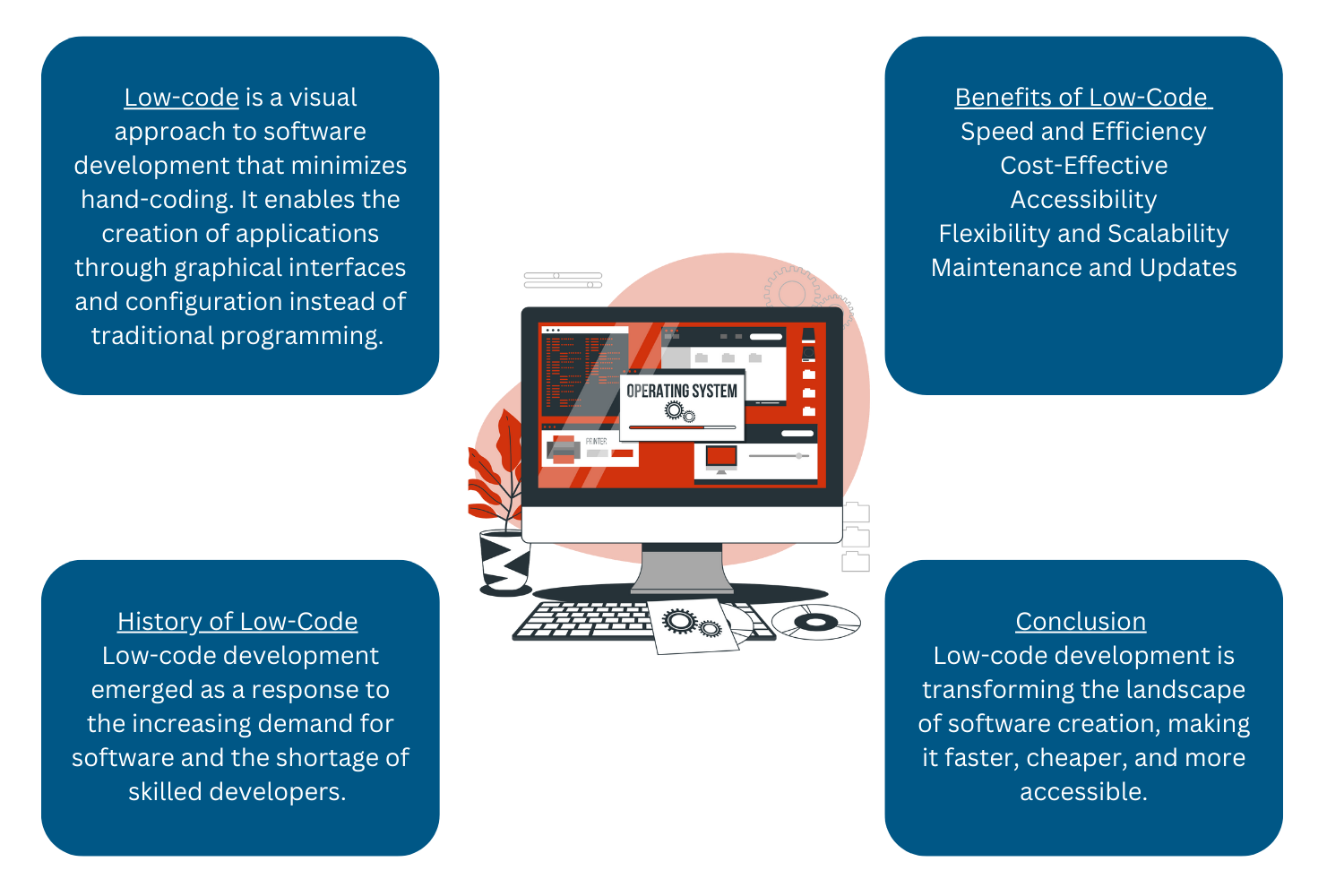In a world where coding used to be complex, low-code makes complexity simple. Low-code development is revolutionizing the way software is created, enabling anyone from professional developers to business users to build applications with minimal coding. This approach is bridging the gap between technical experts and everyday users, fostering a new era of innovation and efficiency.
What is Low-Code?
Low-code is a visual approach to software development that minimizes hand-coding. It enables the creation of applications through graphical interfaces and configuration instead of traditional programming. This method accelerates the development process, making it accessible to a broader range of people, not just those with advanced technical skills.
What is Low-Code Development?
Low-code development platforms provide tools and environments where users can design applications using visual models and pre-built components. These platforms offer drag-and-drop functionality, allowing users to assemble applications quickly. The key advantage is the ability to rapidly prototype, test, and deploy applications, significantly reducing the time to market.
History of Low-Code
The concept of low-code development emerged as a response to the increasing demand for software and the shortage of skilled developers. The roots of low-code can be traced back to the 1990s with the advent of rapid application development (RAD) tools. These tools laid the groundwork for today’s low-code platforms by emphasizing speed and user-friendly interfaces.
In the 2010s, the term “low-code” was coined, and platforms began to mature, offering more robust features and scalability. The rise of cloud computing further propelled the adoption of low-code solutions, making them accessible to organizations of all sizes. Today, low-code development is a mainstream approach, widely adopted across various industries for its efficiency and versatility.

Benefits of Low-Code
Speed and Efficiency
Low-code platforms significantly reduce the time required to develop applications. This enables businesses to respond quickly to market changes and customer needs.
Cost-Effective
By minimizing the need for extensive coding, low-code reduces development costs. It also lowers the barrier to entry for smaller businesses that may not have large IT budgets.
Accessibility
Low-code democratizes app development, allowing non-developers to contribute to the creation process. This fosters innovation and collaboration across different departments.
Flexibility and Scalability
Low-code platforms can handle everything from small, simple applications to large, complex enterprise solutions. They are scalable and can grow with the business.
Maintenance and Updates
With low-code, updates and maintenance are more manageable. Changes can be implemented quickly without extensive rework, ensuring that applications remain up-to-date and functional.
Conclusion
Low-code development is transforming the landscape of software creation, making it faster, cheaper, and more accessible. By enabling a wider range of individuals to participate in the development process, low-code fosters innovation and accelerates digital transformation. Whether you’re a seasoned developer or a business professional, low-code offers a powerful toolset to bring your ideas to life.
FAQs
Low-code is used in various industries, including finance, healthcare, retail, and manufacturing. It is ideal for developing business applications, mobile apps, process automation, and customer engagement tools.
Yes, low-code platforms are designed with security in mind. They offer robust security features, including encryption, access control, and compliance with industry standards. However, like any technology, it’s essential to follow best practices to ensure security.
Low-code works by providing a visual development environment where users can drag and drop components, configure workflows, and integrate data. The platform handles the underlying code generation, allowing users to focus on the design and functionality.
Absolutely. Low-code is useful for rapidly developing applications, reducing costs, and enabling non-technical users to contribute to the development process. It enhances productivity and helps organizations quickly adapt to changing market demands.
Automate Your Workflows Within a Few Days or Weeks
Say goodbye to spending months on developing workflow automation through traditional programming. Now, you can go live with your workflow automation in just a few days or weeks. Click to find out how!




